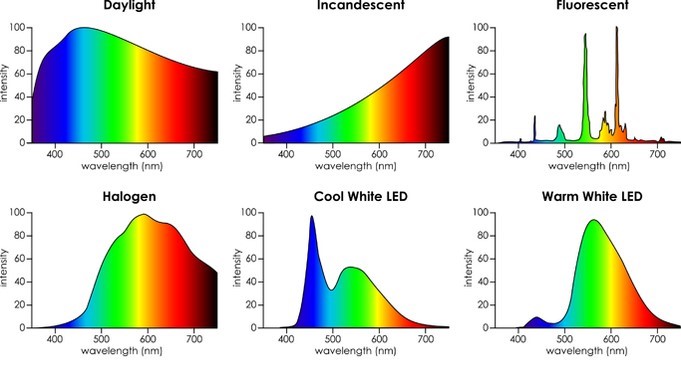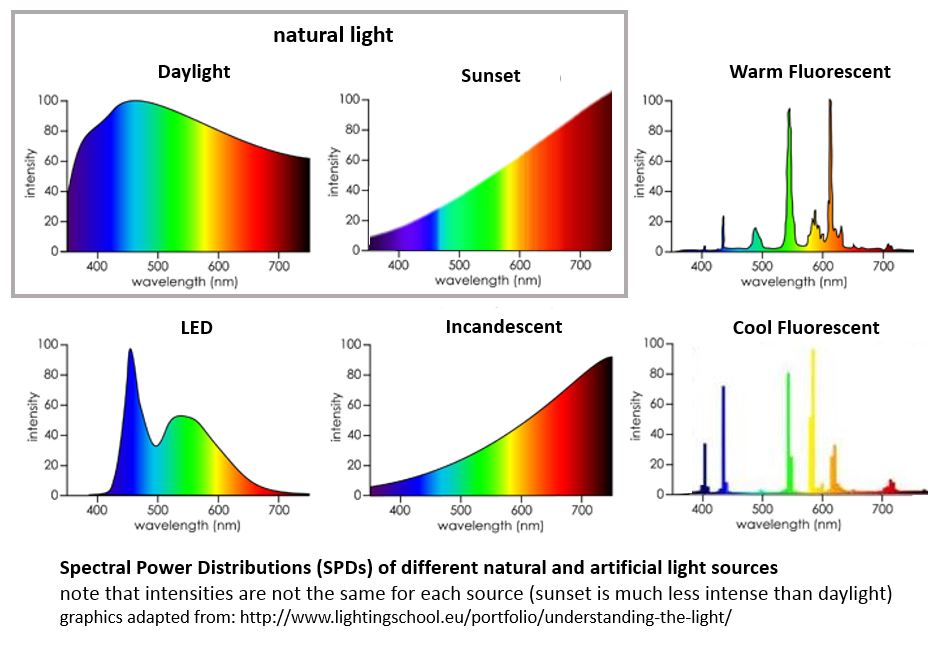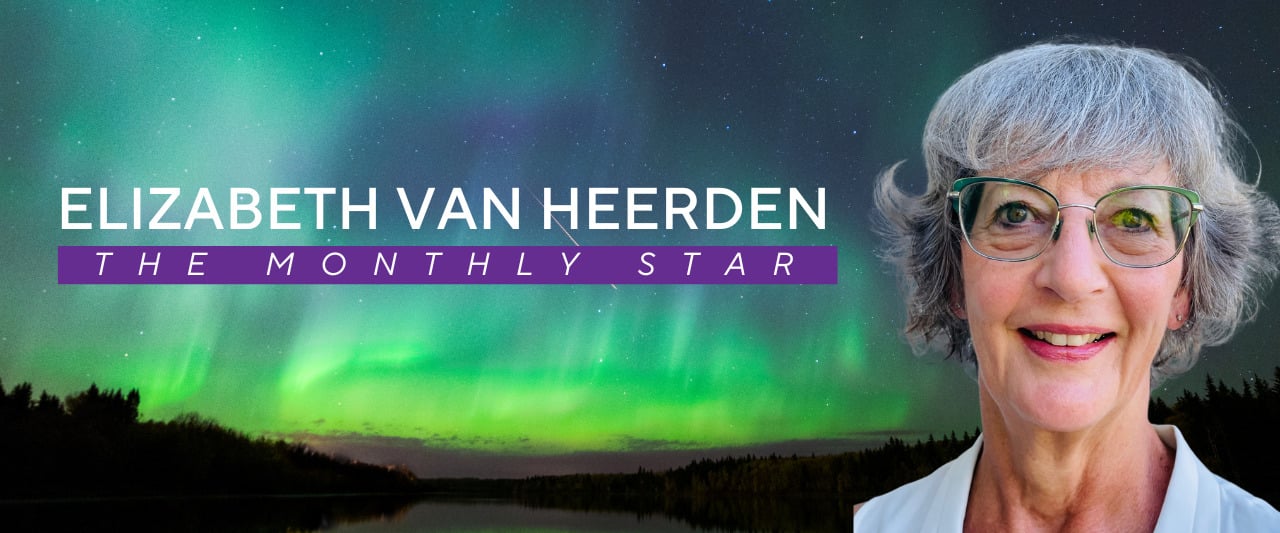
Advocacy through light sensitivity: Chloe Everhart
Chloe Everhart from Alaska shares her journey of light sensitivity after a traumatic accident, advocating for personalized lighting options and dark-sky-friendly outdoor lighting for all.

Each month DarkSky International features a dark sky advocate from the worldwide network of volunteers who are working to protect the night in a feature called Monthly Star. This month, we’re highlighting Chloe Everhart from Alaska, U.S., who tells her story about resilience and why she joined the dark sky movement.
The minivan flew through the air, spinning like an American football. As we landed head down, I tucked in my chin and covered my eyes. “This is my best chance of survival,” I thought to myself. I woke up in a panic. The other passengers stopped me from trying to unbuckle myself and kick out the windshield until I could understand I was on the high side of the now-crumpled minivan. The metal was crushed in on the corner where I was sitting. I had a large, bloody “goose egg” on the middle-back-right-hand side of my head. I later learned this is where the brain processes visual information. From that moment on, I saw the world differently.
Of course my vision was a mess, I thought. My glasses had been lost in the crash. A friend found them on a nearby hillside. I tried putting them on, clearly broken from the impact of the crash, and felt pain in the back of my eyes. I took off my glasses, and tried to figure it out. Holding them in the sunlight, I could see they concentrated the light, like a magnifying glass.
I missed most of the transition to LEDs. I was a nomad in the desert for a few years, up until a short time before the crash. During my first few encounters with cool white LEDs and xenon headlights, I remember hating their painful, harsh light, but now it was so much worse.
When I went to an eye doctor, I learned that the anatomy at the front of my eyes is different from other people’s. Usually corneas are oxygenated by the air, having no blood supply. The whites and corneas of my eyes are mixed, however, and have their own blood supply. The eye doctor had never seen anything like it before.
I also just barely survived bacterial meningitis when I was 19. I’ve also been diagnosed with the “Asperger” type of autism, and have suffered from lifelong sensory challenges. It’s difficult for my doctors and me to untangle how much light sensitivity was from before and after the accident because of all of this.
However none of that mattered to me as much as the burning question: why do some lights hurt me and some don’t?
Having only a grade-school physics education, I was completely unprepared to understand what I was about to discover. I started learning what types of lights there were, which ones hurt me, and what I could use. LEDs and fluorescent lights were painful.
The sensitivity increased over time, and I noticed having more eye strain from my phone. I kept moving to more yellow and amber glasses to filter out the light that hurt me. I was repositioning myself in conversations, trying to face away from the lights. I would ask people to move because they had a light right behind them that meant I couldn’t make eye contact. I was constantly interacting with others from behind a hat and sunglasses.
My vision was fading. I now lived with my neighbor who took care of me after the wreck. I tried to make a habit of never putting down my phone on the dark furniture because I couldn’t find it. One time, I saw the neighbor’s cat and wanted to pet it, so I walked towards it. It suddenly flew away because it was actually a bird, not a cat. After having an increasing number of incidents like that, I started taking greater measures to protect my vision.
For a long time, I ignored a lot of pain. No one around me had it. “It’s got to be all in my head,” I thought. “Is something physical happening, or have I just somehow gone mad and just can’t stand certain lights?”
After two years of this, I was using “Twilight”, a blue light filter application on my phone, but it still gave me difficulty. I switched to an e-ink phone that lets me turn off the backlight. A few years ago, I started to see laser beams off LED indicator lights, especially in lower light situations. They’re annoying in red through cyan, but painful in the common indigo blue and white. I soften almost all power indicator lights with masking tape, usually multiple layers, and/or blue blocking stickers.

I wondered if LEDs were emitting some wavelengths not shown on the spectrum graphs, because visible light is only considered 400-800 nm on the electromagnetic spectrum, which includes x-rays, uv, infrared, microwaves, radio waves, and others. How could they hurt that much and fade my vision if there wasn’t something really wrong with them?
When I was sick, I tried to distract myself and rest by watching something on my old LED-screened, Twilight-filtered phone, I was surprised that I was now seeing a three-dimensional box of light emitting out of my phone as I watched the screen. It’s hard to explain. Even the color-corrected light was painful. I toggled between the lowest brightness for watching TV and a slightly higher brightness so I could see the words to find the next show, burning my eyes in the process.
When I moved to Alaska in the middle of winter, all we could find that wouldn’t burn my eyes in the long hours of lighting were bug lights. That was until we finally got some frosted halogen bulbs. The long hours of artificial lighting caused searing headaches and pain in the back of my eyes if I didn’t protect them.
I would then wear goggle-style blue blockers meant to help people fall asleep. I didn’t understand why lights hurt with the glasses, until I learned about glare.
I kept getting headaches from people’s lights even with the goggle-style blue blockers and a hat. I learned LEDs have medium beam coherence. I started looking at light spectrum pictures. A picture is worth a thousand words when you’re trying to understand or explain light spectrums.

At a house in December I couldn’t find a place to put my face that my eyes weren’t burning. There were harsh white LEDs and fluorescent lights at face level in every possible direction and they seared into my field of vision. I had a headache and it was getting worse. At this point, I carried an emergency light-blocking sleep mask with me, and this was the first time I used it. Sitting there in a room full of people, I put on my light-blocking sleep mask. The worst of the headache and eye pain quickly started to dissipate. I’ve never been able to drive for various reasons, and since it was winter, street lights and headlights were on. My neighbor, who gave me a ride, guided me to the car. I’d already been declared low vision and learned how to walk using a cane to find my way. I learned to do everything under the painful lights blindfolded. It stops the pain.
At home, I use upright halogen torchiere lights in 150 to 300 watts. The apartment I live in came with LED panel lights hardwired in the ceiling, so I put masking tape over the light switches. I keep candles and 650 nm narrow-band LED camping lights for power outages. I hand out single-mode red “astronomy” flashlights to the people around me like party favors, trying to make sure that, in an emergency, they have a light that won’t hurt or blind me.
I learned the term “disability glare.”
Dr. Mason’s podcast helped me understand some mysteries. My Alaska family had taken the trouble to change out the fluorescent light to 2700 k tubes. They still hurt me. Why? It was so upsetting that the words I had relied upon to explain “good lights” and “bad lights” had broken down. He said, “Engineers love to talk about color temperature, but that’s an average. It’s much more helpful to look at light in terms of nanometers.” It was like a switch had been turned on in my brain! I looked at the spectrum pictures of “good lights” and “bad” lights for the thousandth time. All the ones that hurt me have a blue emission peak in short wavelength blue. I’m so grateful to Dr. Mason for giving me effective words to explain what hurts, as well as proof that short wavelength blue light causes damage, and that my eyes are reacting to physical phenomena.
I can’t speak for what other people go through, but I found a list of conditions affected by light:
“People with conditions including lupus, XP, forms of eczema and dermatitis, electrosensitivity, ME, autism, epilepsy, migraines, certain types of porphyria, and many more, can suffer severe and painful reactions to non-incandescent lighting.”
At my current level of experience and understanding, my heart breaks the most for autistic kids who don’t have access to light that does not harm them, and who don’t have the words or experience to explain what hurts and why, just as I didn’t have the words.
What I hope to see in the world is for people to have the freedom to choose the lighting that works best for them. People with disabilities that involve light sensitivity need to have access to lights that improve, instead of reduce, their quality of life.
Outdoors, a standard of 630-690 nm lighting would solve a lot of problems. Blue light destroys night vision. Mosquitos have a negative phototaxis of 630-690 nm light. It just makes the most sense.

LED lights need light-diffusing covers over them, just like other lights do. Without the cover they are not more efficient. They are more laser-like and more damaging. They cause disability glare. Higher-quality light requires breaking up the beam, especially when they may be pointed at people, as with headlights and ceiling lights.
The goals of DarkSky International overlap with my own personal needs more than any other organization. It’s been such a blessing to find this community. I love connecting with people with similar goals working towards something positive, rather than a shared disability.
Once as I walked along a busy road, I saw maybe 20 to 30 dead butterflies. It was the only road with real traffic for miles. I think it confused the monarch butterflies, and they flew into the headlights of oncoming vehicles. The more I learn about DarkSky, the more I learn about saving the night sky for our children and our children’s children. I want them to see the stars. The more I learn about what spectra insects see, plants use, and what a big deal this is, the more I protect my eyes. Through several years of research on light spectra with an open mind, I’ve learned that the work DarkSky International is doing is of the utmost importance. I believe the widespread use of short-wavelength blue light may someday be viewed the same way people now view smoking, asbestos, and radium. Just another terrible idea.
My vision is that, for indoor settings, let people choose the lighting that suits them best, including incandescent light, and outdoors use dark-sky-friendly lighting so we may see the sky and live our best lives.


















